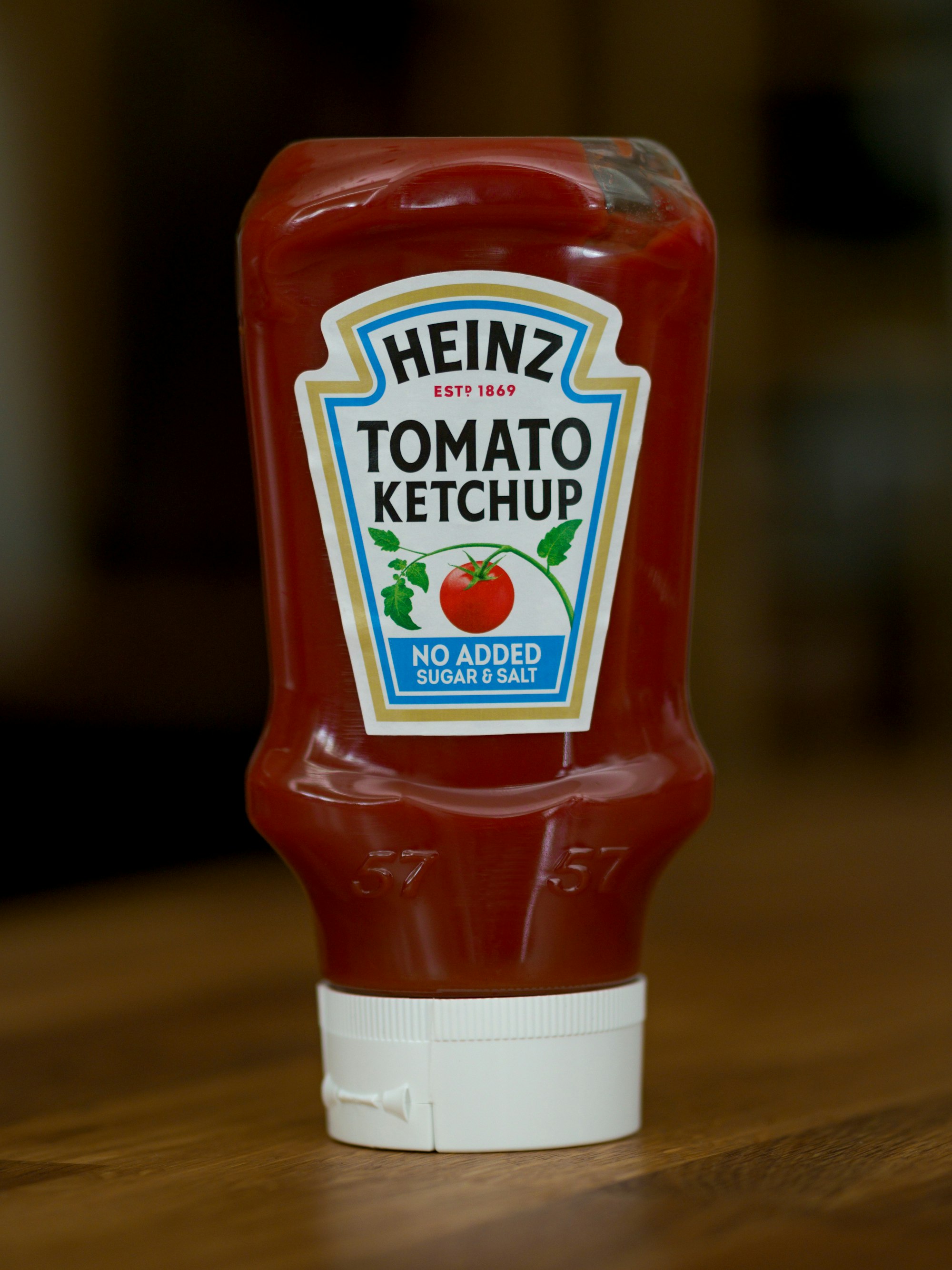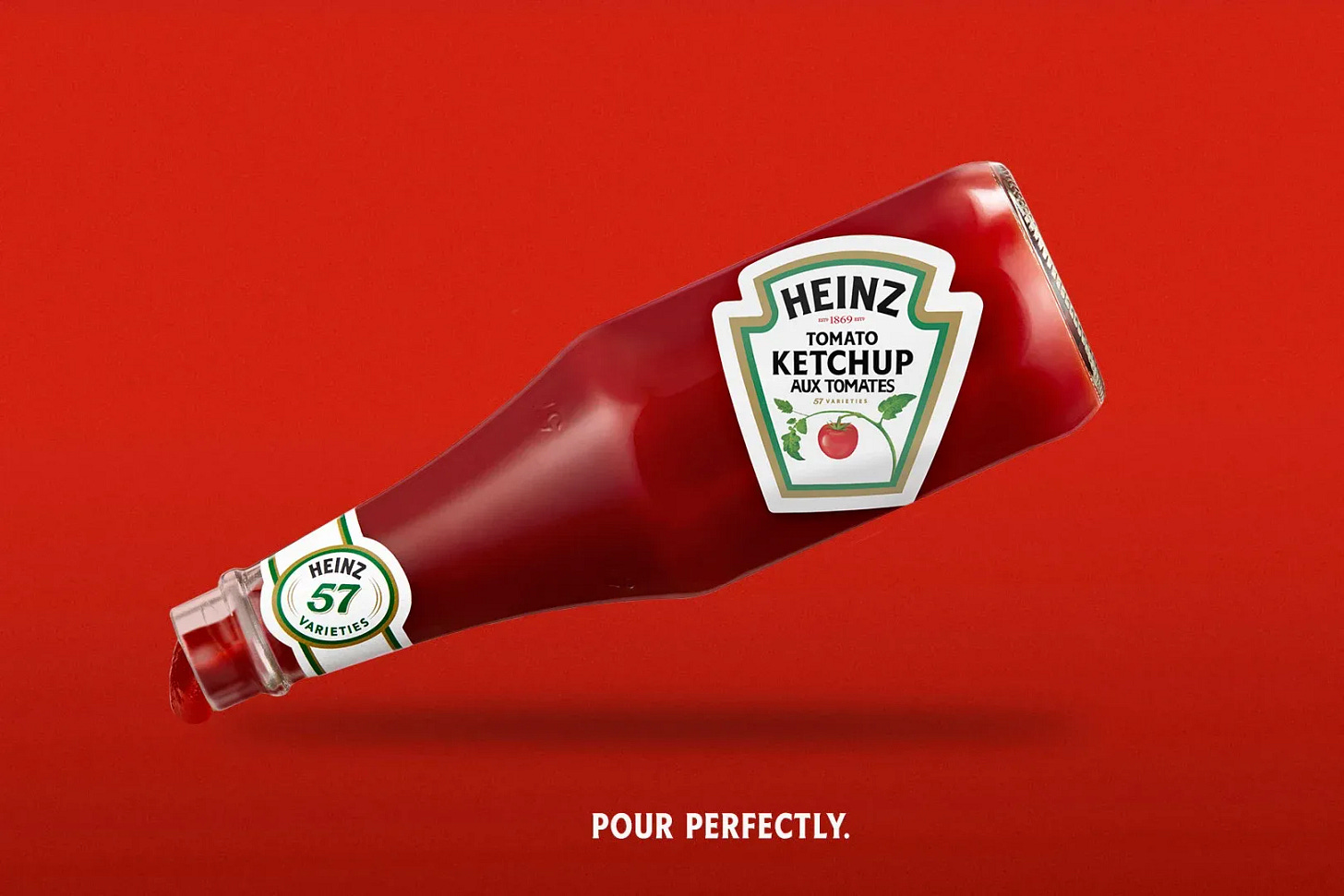🍅What can ketchup learn us about compliance training?
Change the design of your training
Let's talk about emotions!
Frustration, specifically.
Because compliance training can be frustrating.
Just like a bottle of ketchup.
To get in the right "frustration" mood, I suggest you do a small exercise:
Close your eyes and repeat after me:
"I am a sales manager. I need to close five more deals before the end of this month. I want to win the prize of Best Performing Sales Manager 2022, so I need those deals. Okay, I can do this, no time to lose. I am going to do a lot cold calls, I am going to call all prospects, I am going to close those deals. I got only 4 weeks left, no 3 weeks because of Christmas, but I can do this. Just go all in these 3 weeks. Time is money, but I can make this work. NOW."
Then imagine you are opening your mailbox, hoping to see some prospects reaching out to you, hoping to see some customers and deals. Or even meetings. You want to take action.
But you look closer and you see...
AN EMAIL FROM THE COMPLIANCE TEAM
The Compliance team invites you for a full day of compliance training next week.
NEXT WEEK. FULL DAY.
You still remember the last year's training on very obscure things like money laundering and corruption... all things I don't do. And they don't have a clue of what I'm actually doing as Sales Manager.
Waste of time!
+++ End of mood-setting exercise +++
If you hijack someone's time for a day or longer, don't be surprised people get frustrated about compliance. Especially if you don't deliver on their expectations.
This feeling perfectly described my emotions when dealing with a glass bottle of ketchup:
Getting the ketchup out of the bottle is a frustrating experience. You push and wait and push and wait. Nothing happens. And then suddenly, SPLASH, you are eating ketchup with a burger and fries on the side.
And for many people, compliance training is also frustrating.
Similar emotion, similar solutions? Let's find out!
Solving a frustrating experience - Part 1
There are two solutions to fix a frustrating experience:
Let people accept it.
Change the way it is.
You think: let's do option 2 immediately and I agree.
But that's not how reality works. People like the easy way first, which is trying to explain to people that what they are experiencing (frustration) is their problem, so they need to solve it (by accepting it).
That's EXACTLY what Heinz Ketchup tried for many years.
Heinz tried to let people accept that there is nothing wrong with their product. Instead, they shouldn't be frustrated about it but happy! "Good things come for those who wait!"
You can try to explain to that sales manager that is frustrated because of your compliance training that "Compliance is important because (insert cost of non-compliance) so we need to train" or "Compliance can ruin our reputation so we need to train".
"Good things come for those who are being trained"... Something like that?
Yeah. But the problem stays the same: your training is frustrating.
Frustrated about compliance training? Your problem. Accept it.
So, just like Heinz, you can try to explain it even better: not just your problem, you just didn't get it in the first place.
We explaaaaaain it agaaaaaaain:
In this advertisement, Heinz tries to educate people on how to use the glass bottle (still with the design flaw).
The basic assumption: people got it wrong, so we explain it better. (or: you're stupid).
Seriously this is what they are doing: ignoring their flaws and blaming the user.
It's kinda what Legal Design is trying to achieve: "Oh you didn't read our Compliance policy? Poor boy or girl! Let us make it easier for you, so you'll finally read it."
Don't shoot, Legal Design friends! Recent research shows that changing compliance training from a policy text to an infographic doesn't lead to better compliance results.
I don't want to pick a fight with either Heinz or the Legal Design space. But they don't achieve the right results: the perfect amount of ketchup. Or the right compliance behavior.
☂️
Sure, some people may benefit. In some restaurants, they prefer the glass bottle of ketchup for aesthetics. And some people prefer a policy that reads better. But the result stays the same: the ketchup still flows slowly. And more importantly: reading a policy isn't the same as actually performing the right action.
Solving a frustrating experience - Part 2
The problem is that the design of classic forms of compliance training is wrong. Just like the design of a glass bottle of ketchup is wrong.
Classic compliance training is framed around the law and the risks.
It goes like this:
This is the law about X.
It's important because of X.
The main risk is that we do X.
If you spot that risk, contact asap X.
That's good if you are training a young legal or compliance professional, who needs to know the law and understand the risks. But with compliance training, your main goal is to train non-compliance colleagues on important but very specific topics.
That's a different audience.
So you need a different design.
The solution is audience-driven
If you would listen to your target audience, you are not just tweaking your existing solution, but you might radically change it.
Heinz did that with their new design: a squeezable bottle, upside-down so it uses gravity to make it flow-ready.

You should also change the design of your compliance training.
Make compliance training audience-driven.
The main focus of your training should cover one goal, one topic. It should look more like this:
How to spot suspicious orders?
This training will look less fancy:
We delete the part about export laws/sanctions laws/AML laws/etc.
We may talk slightly about "why it's important",
We don't ask them to spot risks, that is not their job.
We ask them to spot signs of risk.
Creating a short but audience-driven training is hard, though!
It requires that you segment your audience into specific groups and you have a deep understanding of their job responsibilities.
👀
Want to read more on Audience-Driven Compliance? Check my article here.
Once you have done your homework (that is, understanding who your audience is per topic), you can start building on your training program.
It also helps you distinguish between what is a must-have and what is a nice-to-have.
Let's look at two examples of two audience-driven solutions, that used another design than classic compliance training.
An example? Gamification.
Much has been said about gamification.
And I hate to admit it, but I have been a long-time critic of gamification. Yet, today I provide a compliance game myself too!
Why this change?
It's not why you think it is: it's not because of engagement.
Of course, you need to get people interested in your training and keep them interested. Gamification helps a bit with that, but you only need a bare minimum.
The real reason I became a fan of some types of games: is the power to start an interesting conversation among all participants (the audience).
So people start thinking on a deeper level and look at the content from a different angle. That is, from a practical angle.
And by taking actions in the game that simulate real-world actions, they apply lessons to build awareness. Not general awareness ("we need to comply with the law X") but specific awareness ("if I receive this type of information from the customer, it is a red flag that I may need to report").
Sure, you can go through a slide deck explaining the red flags of a suspicious order. And sure, you can provide them with a nice checklist of these red flags.
But nothing beats real practice: training by conversation.
Enter: Conversational Games
Having a conversation with other people in a specific context gives you a much deeper view of the topic. And sometimes you need to simulate that specific context.
Hence, games. Games that trigger conversation. Not just engagement.
Other options?
Gamification is not the holy grail.
Let's say you want to stress the why of screening orders on suspicious facts (instead of training on the "how"). "Why do we need to investigate orders coming from a trusted customer?"
Well, if this customer is based in Russia, it makes sense from a compliance perspective but that's not a satisfying answer for the business, your audience.
It's a business dilemma with an ethical angle.
Enter: Ethics City Tours
Say what????
You can guide your team through a historic city.
Why?
History is full of stories that can ignite conversations and inspire people.
Example: A tour through Brussels, Belgium, will learn that it was a city of merchants 5 centuries ago. The Grand Place is a great example of the wealth created by the merchants. It has many Baroque "Guildhalls", which are associations of craft guilds that dominated the economic life of Brussels, in the late medieval and early modern periods.

Oh, nice!
The wealth of these merchants was created by exporting their products to neighboring cities, counts, principalities, and kingdoms. Which in turn spurred the economy in these places. Win-win (or non-zero sum)
💡
A non-zero-sum: That's the history of humankind (or the so-called logic of human destiny as explained by Robert Wright in his book NonZero).
But as we know very well, periods of wealth are, more often than not, followed by periods of war.
In 1695 Brussels was bombarded by the French troops of Louis XIV. Nevertheless, the French were business partners for many Brussels' merchants.

When you tell this story to your team, ask them what they would do. What would they do if they were a medieval merchant that got wealthy because of trading with France?
Would you keep doing business with them?
Even if you provide "economic resources" to your new enemy?
And what if your city, Brussels, would enact a prohibition to do trade with France?
How do you balance the interests of your city against your own commercial interests?
These are just a few questions, framed in a bigger, historical story.
It should trigger the right conversation when you want to explain "why" trade regulations (like embargoes, sanctions and export laws, etc.) are put in place.
So your audience gets a better understanding of "why" they need to screen orders on suspicious facts.
Conclusion: what's the lesson of this Mini-Guide?
Focus on the interest and perspective of your audience.
And make your product (either ketchup or compliance training) audience-driven, so you get a perspective focused on the outcome instead of the tool.
By focusing on the objective outcome (and the behavior that leads to that outcome like conversations), you will get more creative.
An audience-driven approach will enable you to put the same compliance training each time in a new jacket.
You can train via a board game. To trigger conversations about the "how".
Or you can train during a city tour. To trigger conversations about the "why".
Both are examples of how you can change the design of your training.
Just like Heinz did, after listening to their audience.
No more frustration.
But the right outcomes.
✌️




